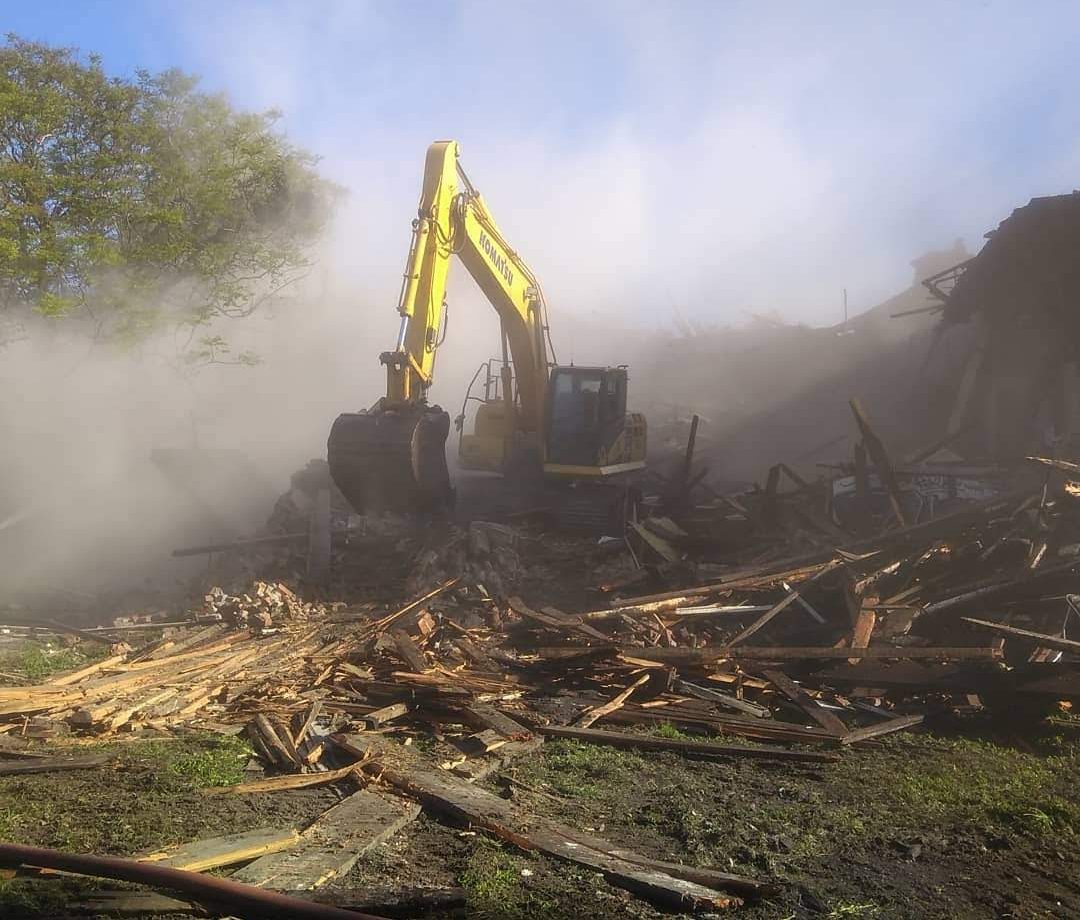A white paper prepared by the Preservation Resource Center of New Orleans, November 2021
Role of local historic districts
All politics, they say, is local. All preservation too — at least when it comes to regulation. Federal and state governments operate historic buildings, plan infrastructure, and offer financial incentives for commercial revitalization. But across most of the United States, regulating existing historic districts and landmarks falls to local government. More specifically, it falls to preservation commissions, which typically oversee demolition and new construction within local historic districts or affecting individual designated landmarks.
While these local commissions vary in the extent of their oversight — some regulating only a handful of properties, others thousands — they share a surprising procedural consistency, owing partly to best practices in the field and partly to commonalities across state enabling legislation. These commissions consider only the exterior of structures, not interior decorative elements. Most issue certificates of appropriateness (COAs), which are required in addition to other building permits. Appointed by a mayor or governing body, commissioners typically review projects based on published guidelines and their decisions are subject to appeal.
But what happens when a property owner doesn’t play by the rules and builds or demolishes a structure without a certificate and permit? Procedures and penalties become far less consistent. Some jurisdictions can levy hefty fines, and some can require the work be undone or a building reconstructed. Others — in fact, most of the 30 commissions surveyed for this report — are far more limited.
In many cities, illegal (meaning unpermitted) construction and demolition in local historic districts is treated as a violation of the building code or property maintenance code. This approach benefits from an established enforcement apparatus and clear precedent. In some places, it can be grindingly slow owing to legal hurdles, staff shortages or a lack of political will to levy fines against property owners (also typically voters). Nevertheless, it makes sense for many of the violations encountered by local preservation commissions.
Significantly, however, it fails to distinguish the irreversible nature of violations involving the permanent loss of historic fabric. While typical code violations (such as improper handrails, fallen gutters, or high weeds) can be reversed through repair or routine maintenance, once all or part of a historic building is demolished, it cannot be replaced. Treating demolition like other work done without a COA or permit misses the point.
Penalties vary widely across the United States
Some preservation commissions do have the authority to require a structure be rebuilt. The Landmark Preservation Commission in Denver, Colo., can require reconstruction of a designated building in the event of an “unlawful” partial or complete demolition: “This may specifically include ordering the reconstruction of a structure that was demolished to replicate as closely as possible the original structure.” This approach may well have a deterrent value, particularly to a property owner hoping to redevelop a site with a larger new structure. In cases where only a portion of the building has been removed, this may be the best preservation outcome as well. When an entire structure has been razed, however, replicating it with non-historic materials is unsatisfactory to many preservationists.
Florida law provides for fines of up to $15,000 for violations determined to be “irreparable or irreversible” by a code enforcement board or special magistrate. That ceiling drops to $5,000 in cities of less than 50,000 residents. While this provision recognizes that not all violations can be fixed, it does not specifically amplify putative measures based on location within a local historic district.
A Louisiana law, Revised Statute 25:740, establishes the range for fines issued when an owner in a local historic district “demolish[es] a structure or edifice without having received an appropriate certificate of appropriateness” as between $1,000 and $10,000. The relevant code section was last revised in 1979, when the $10,000 cap was the equivalent of $37,760 in 2021, according to the Bureau of Labor Statistics. This illustrates an inherent liability when proscriptive enforcement measures are buried in seldom revised statutes.
Wisconsin law also limits the amount a locality can fine a property owner for unpermitted demolition to $10,000. However, the state does so by classifying the offense as a Class A misdemeanor, which carries the additional prospect of up to nine months in prison. This can be a powerful deterrent for property owners who might otherwise be tempted to treat fines as a “cost of doing business.”
Though less severe than a prison sentence, another punitive measure aimed at deterring illegal demolition to make way for new (and potentially lucrative) development is to freeze redevelopment of the property. This can take the form of issuing a stop work order or withholding a certificate of occupancy until a violation is resolved.
In Houston, Texas, the local ordinance concerning the preservation commission specifies that demolition without a COA halts redevelopment for two years: “The building official shall not issue a building permit, and no other person shall issue any other city permit, for the site.” Furthermore, the commission is instructed not to issue a certificate for any new structure larger than the one demolished for 10 years’ time.
When Laguna Beach, Calif., revised its preservation ordinance in 2020 following a multi-year study process, the city stiffened penalties for demolition without a COA to include a five-year moratorium on any building permit for the site. If that is not enough, the ordinance states: “Any person who demolishes a structure listed on the City’s register, either in part or in whole may be subject to an administrative penalty of up to one hundred thousand dollars for each violation.”
After-the-fact permit fees charged at two, three or four times the standard rate are another tactic localities use to deter unpermitted work, including demolitions. Tennessee law does not authorize preservation commissions to fine property owners directly, but owners may be charged increased after-the-fact permit fees by a permit official. Depending on a city’s permit fee structure, the cost could rise into the thousands.
Without robust enforcement powers, preservation commissions and the communities they serve are ill equipped to deter bad actors willing to flout the rules in order to cash in on a hot real estate market.
A closer look at Louisiana
Louisiana has a longstanding state-local partnership to carry out the documentation and preservation of historic resources. The state has 49 certified local governments, which meet standards of practice established by the National Park Service and Louisiana Office of Culture, Recreation and Tourism. An additional network of 35 Main Streets promotes economic development, including building reuse, along the state’s historic commercial corridors.
Each of Louisiana’s certified local governments has a preservation commission charged with protecting locally designated districts and landmarks. These resources vary widely, reflecting the unique history of each parish, city or town. Their commissions, however, follow similar procedures in keeping with state legislation that spells out local authority and the rights of property owners. This includes the aforementioned floor and ceiling on fines for demolition without a COA.
With 34 percent of its buildings located within a locally designated historic district, New Orleans is one of the most protected historic cities in the nation. This reflects the community’s appreciation for the city’s rich architectural heritage as well the understanding that the historic built environment sustains the city’s robust tourism sector. A substantial portion of protected properties are within “partial control” districts designated in 2017. In these areas, only demolition permits require review by the local Historic District Landmarks Commission; routine maintenance and lesser alterations do not require a COA.
Additional properties not locally designated but situated within National Register of Historic Places districts may also be subject to review by the City Council under a 2020 ordinance that superseded a prior Neighborhood Conservation District. Demolition without the required City Council approval carries a post demolition fee of 15 percent of the building’s assessed value, which, if unpaid, results in a lien on the property. Violators may appeal to the City Council for a waiver. Nevertheless, it remains possible for this after-the-fact fee to exceed the $10,000 maximum fine available to the local Historic District Landmarks Commission. That imbalance can largely be explained by the fact that the City Council is not restricted by the state law’s $10,000 fine cap, which is placed on preservation commissions. Also, the $10,000 cap was set in 1979. It was not indexed to inflation, and it has not been adjusted since.
The value of land underlying historic buildings in many Louisiana communities has increased substantially in the past 40-plus years. In scenarios where removal of a historic resource allows for more intense and profitable use of the site, owners may regard the fines and fees associated with unpermitted demolition as a cost of business. Three recent examples in New Orleans call into question the deterrent value of the current system. Each involved a “retention of demolition” request for after-the-fact approval of irreversible demolition.
Recent New Orleans case studies
The late 19th-century Queen Anne home at 1006 Milan St. in New Orleans collapsed in a wind storm on May 12, 2020. It was undergoing a renovation by a development company. Multiple neighbors testified to the New Orleans Historic District Landmarks Commission that work began without permits and likely compromised the building’s structural integrity. As a result, the commission levied a $10,000 fine, which the development company promptly paid before subdividing the lot and constructing two new homes advertised at more than $1 million each.
In the Carrollton neighborhood, an antebellum courthouse, including a complex of lesser buildings, was auctioned in 2017 for $4.7 million. Representatives for the consortium undertaking a renovation and an expansion to create an assisted living facility repeatedly told the Historic District Landmarks Commission and its Architectural Review Committee they intended to relocate and reuse a wood framed structure built soon after the courthouse was converted to a school in 1889. However, in July 2021, the commission learned that only a few windows, doors and chalkboards were salvaged. Again, the commission levied the maximum $10,000 fine, which the developer paid within a week. A member of the commission bemoaned the fine as “a drop in the bucket” for the multimillion-dollar project.
In downtown New Orleans, the construction of a multi-story commercial short-term rental at 701 Baronne St. will total $15.5 million, according to issued permits. Plans call for the preservation of the facade and first 25 feet of an existing historic two-story commercial building. After initially being denied permission to move ahead at all, an architect hired by the developer appealed to the New Orleans City Council, which over-ruled the Central Business District Historic District Landmarks Commission. But the council stipulated by ordinance that: “Only the roof may be demolished, and no other structural elements shall be removed.” Nevertheless, city inspectors found crews removed a wall and other structural elements in the process of installing auger piles for the new construction. As of writing, the applicants have appealed the resulting $10,000 fine.
The right to appeal, initially to a locally elected governing body and ultimately to the courts, is an important protection of property rights built into Louisiana’s preservation framework, as is the requirement that local commissions adhere to public meeting laws. These ballasts keep the system from tilting to an extreme. New Orleans preservation commissions and the City Council routinely issue de minimis fines or waive them entirely in cases involving economic hardship or disaster. The examples above stand out because they involved experienced, well-financed applicants who intentionally overstepped local permit requirements or ignored them all together.
Conclusions and Recommendations
When establishing Louisiana’s very successful framework for historic preservation, state lawmakers empowered local communities to identify and protect cultural resources while carrying out routine land-use and building oversight. The state specifically empowered local preservation commissions with the authority to issue meaningful fines for unauthorized demolition as a deterrent against scofflaws.
These commissions are still the bodies best positioned to evaluate claims of historic significance, structural integrity and mitigating factors in a transparent fashion. However, the deterrent value of a $1,000 to $10,000 fine has diminished as land values and construction budgets have soared. The commissions surveyed for this report repeatedly emphasized their goal is not to levy fines but to bring properties into compliance with standards established by local ordinance. When a property is permanently demolished and disposed of, be it in part or whole, that goal cannot be realized.
At minimum, the Louisiana Legislature should revise the applicable statute, RS 25:740, to increase the maximum allowable fine for demolition of a locally designated historic structure without a COA to at least $40,000. This would restore the deterrent effect lost to inflation since the law’s passage. However, to prevent history repeating, lawmakers can allow an alternative fine calculation that will not erode with the passage of time. For example, specifying that preservation commissions may levy a one-time fine of up $40,000 or 20 percent of the property’s pre-demolition assessed value, whichever is greater.
In instances where multi-million-dollar development projects are predicated on the removal of a low-cash-value historic resource, property owners may still opt to pursue demolition. However, faced with the prospect of a fine of $40,000 or more, they may be more open to alternatives, such as relocation of historic structures. Most importantly, they are more likely to follow the course charted by Louisiana law, pursuing a COA through appeal, if necessary, before acting in disregard of the law.





